what does e coli do to the human body
If you lot followed news headlines in the spring/summer of 2011, yous may recognize E. coli every bit the agent responsible for outbreaks of serious diarrheal illness in Germany. But this is only one small office of the story of Due east. coli; its human relationship to human wellness and the food we swallow is much more complex. Not all Due east. coli are bad - in fact most are not - and some are even beneficial! In this study the larger story of E. coli is told: its role in human wellness, in food, and even in our understanding of our own biology.
Front Thing
About ASM FAQs
The American Academy of Microbiology is the honorific branch of the American Society for Microbiology, a non-profit scientific society with nigh 40,000 members. Fellows of the AAM take been elected by their peers in recognition of their outstanding contributions to the field of microbiology. Through its colloquium program, the AAM draws on the expertise of these fellows to accost critical issues in microbiology.
FAQ reports are based on the deliberations of xv-twenty expert scientists who gather for a day to develop science-based answers to questions the public might have nearly topics in microbiology. The reports are reviewed past all participants, and by exterior experts, and every try is made to ensure that the information is accurate and consummate. Notwithstanding, the report is not intended to advocate whatever particular position or action, nor to replace the advice of an individual's health care provider.
The AAM does not offer medical advice and encourages consumers to be educated and informed when making medical decisions.
Contents of the study may exist distributed further so long as the authorship of the AAM is best-selling and this disclaimer is included.
STEERING COMMITTEE:
Michael P. Doyle University of Georgia
Alison O'Brien Uniformed Services Academy
Stanley Maloy San Diego State University
Ann Reid American University of Microbiology
Michael Ingerson-Mahar American University of Microbiology
PARTICIPANTS:
David Acheson Leavitt Partners
Peter Feng FDA, Center for Food Condom and Applied Diet
Richard Guerrant University of Virginia Schoolhouse of Medicine
Carolyn Hovde Bohach University of Idaho
James B. Kaper University of Maryland School of Medicine
James P. Nataro University of Virginia School of Medicine
Karen E. Nelson J. Craig Venter Constitute
Howard Ochman Yale University
Robert Tauxe Centers for Disease Control and Prevention
Alison Weiss University of Cincinnati
If you followed news headlines in the spring/summertime of 2011, yous may recognize E. coli every bit the agent responsible for outbreaks of serious diarrheal illness in Germany. Merely this is only one minor part of the story of E. coli; its relationship to human health and the food we eat is much more complex. Non all East. coli are bad - in fact most are not - and some are fifty-fifty beneficial! In this report the larger story of Eastward. coli is told: its part in human health, in food, and even in our understanding of our own biology.
What is Eastward. coli anyway?

Eastward. coli is a bacterium; a ane-celled organism that is too small to run across by the naked centre, and is also sometimes referred to as a microorganism or microbe. E. coli is an abbreviation of the organism's full scientific proper name: Escherichia coli. Scientists normally use E. coli for short; similar to how we phone call ourselves humans, rather than using our total scientific name Homo sapiens. E. coli got its first proper name, Escherichia, from the German pediatrician Theodor Escherich, who discovered the bacteria in 1885. Its 2d proper noun, coli, means "from the colon", which is the organism'south natural habitat. Most Eastward. coli live and grow harmlessly in the gastrointestinal tract, or gut, of many animals, including humans.
There are many unlike types of E. coli. Scientists refer to these different types as strains. In a sense, East. coli strains are like dog breeds, all strains of E. coli are the aforementioned type of organism but they may have somewhat different traits. Similar dog breeds, different Eastward. coli strains can mix with each other to produce new strains with a combination of traits. Scientists sort E. coli into different strains according to the detail gear up of marking compounds they behave on their surfaces (not unlike dogs' different colors and textures of pilus). For example, the East. coli strain responsible for the outbreaks in Germany is named O104:H4. The letter "O" refers to a marking on E. coli's surface that is found in hundreds of different shapes, in this case, shape #104. The "H" describes a different marker that is found on the Due east. coli's flagellum, a tail-like bagginess used by E. coli to swim around. It is non the "H" or "O" molecules themselves that make E. coli lethal. They are but markers that are easy to detect, allowing us to tell 1 E. coli strain from some other.
Unfortunately, the E. coli strains people are most familiar with are those that cause disease. Perhaps the most infamous strain is O157:H7, which was responsible for the Jack in the Box hamburger outbreak in 1993 and the more than contempo spinach outbreak in 2006. Rather than existing harmlessly in our gut, disease-causing strains similar O157:H7 disrupt body functions, resulting in diarrhea. The almost dangerous strains can as well bear on the kidneys and nervous systems of victims, causing permanent harm and sometimes even resulting in expiry.
However despite all the attending given to their harmful brethren, well-nigh E. coli are not harmful to humans, and some are fifty-fifty benign. Many of us host a population of Due east. coli in our gut that aids digestion and protects us from other harmful microbes. Scientists accept used strains of E. coli to written report fundamental biological processes, contributing to many important scientific breakthroughs and teaching generations of biological science students the rudiments of the scientific method. Other Eastward. coli strains are utilized by researchers in manufacture to produce important compounds we use every 24-hour interval.
How has Eastward. coli contributed to our understanding of biology?
The Nobel Prize winning French scientist, Jacques Monod, once said "What is true for E. coli is truthful for the elephant." Although his statement may seem puzzling, information technology is perhaps the all-time way to summarize the contribution of Eastward. coli to our understanding of biology.
What Monod meant was that all living organisms operate in a similar manner, whether bacterium or elephant. Many of the same central processes that occur in elephant cells (or human cells for that affair) occur in East. coli as well. While humans and other higher organisms are often made of trillions of cells working together, E. coli is equanimous of a single cell. Thus biological processes that would exist difficult or unethical to study in humans or animals can be studied more hands in E. coli. This is why scientists often refer to Due east. coli as a "model organism" - it provides them with an easily studied model of biological processes that are shared past living organisms.
![]()
BOX ane.
E. coli wins tape number of Nobel Prizes!
One particular strain of Due east. coli, K-12, has been used equally a model organism by scientists for decades and has been an important player in many of the keystone experiments that have contributed to our knowledge of biological processes. For example, the discovery of codons, the language of DNA in which all our genes are written, would not take been possible without the use of E. coli. Studies in Due east. coli have helped scientists sympathise how certain sets of our genes are turned on or off, depending on the circumstances. By studying the viruses that infect Due east. coli, scientists have learned much about the course and function of viruses that infect humans, like the flu virus or HIV.
E. coli is such an important tool to scientists that information technology was one of the first organisms selected to have its complete set of genes, or genome, sequenced. When techniques were adult to insert genes from other organisms into East. coli, it became even more important as a tool to help us learn about factor office and regulation. E. coli jumpstarted the biotechnology era considering E. coli'southward genetic flexibility allowed industrial microbiologists to use E. coli as a factory to produce many biological compounds nosotros use every mean solar day. In the past, insulin used for the treatment of diabetes had been harvested from pigs (or fifty-fifty sharks). Past inserting the human cistron for insulin into E. coli, homo insulin can now be produced inexpensively in large quantities. Rennin is a good example of a commercial product produced in Eastward. coli. Used in cheese production, rennin was previously harvested from the stomachs of calves. At present it is mostly manufactured in special Eastward. coli strains.
Information technology may seem counter-intuitive, merely E. coli can even be used to make our food and h2o safer to consume. Diagnostic tests designed to detect all types of E. coli (good or bad) can alert food rubber microbiologists to the possibility of contamination before food or water is consumed. Due east. coli are excreted in feces, so while it may only signal the presence of harmless E. coli, positive results warn regulators that nutrient may have been exposed to unsanitary conditions.
What does the naturally occurring E. coli in our GI tract do?
Eastward. coli is but one fellow member of a much larger customs of microorganisms that alive in our intestines. To give an idea of the size of this microbial community - called the gut microbiome - the average human gut contains virtually two pounds of microbes (about ninety trillion individual microbes!) that live in an intimate partnership with their man host. For comparison, the average human body is fabricated up of about 10 trillion cells. With 90 trillion microbes associated with you, only about ane in 10 cells in your body is even man! Despite these amazing numbers, scientists are only simply showtime to understand how important the association with this microbial customs is for our health.
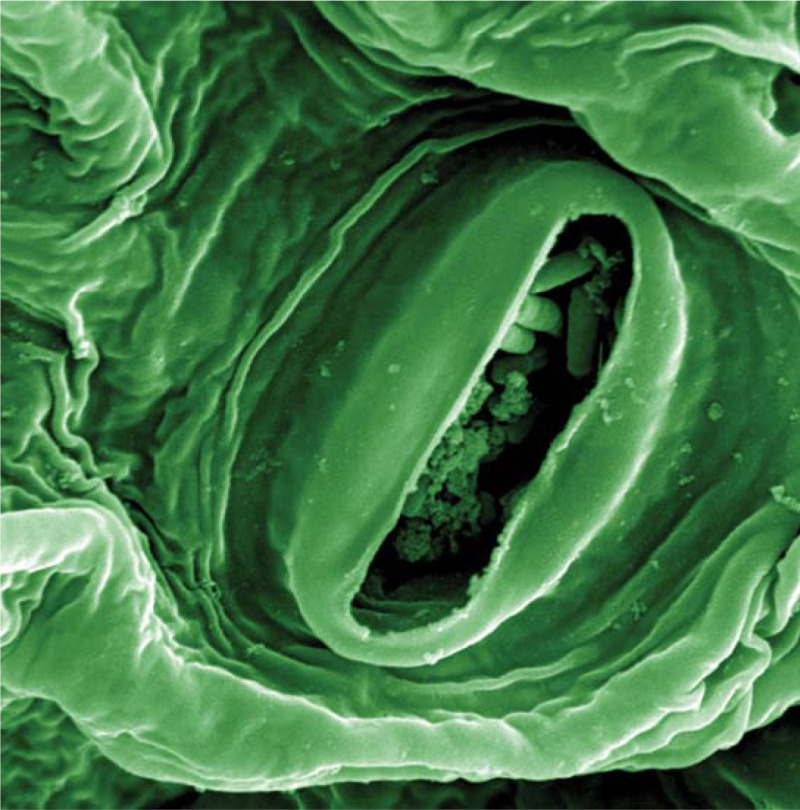
Humans cannot properly digest some of the compounds we ingest in our nutrient. Microbes in our gut can break downward these compounds and release nutrients that would otherwise be inaccessible. These microbes tin also produce vitamins like Chiliad and B12 that are important for our wellness. In addition to these functions, the microbes in our gut accept upwards space. While this might not seem important at first, it'southward vital for our health. The moist warm environment of our gut is a perfect habitat for microbes to grow in; including many that can make u.s.a. sick. The microorganisms in our gut microbiome tin really protect united states by challenge this space and preventing many other harmful organisms from growing in that location. If you have always taken a potent antibiotic for an infection, you may take experienced immediate the importance of our gut microbiome. An unfortunate side-effect of many broad spectrum antibiotics is the disruption of this protective layer of microorganisms. Without that protective layer other harmful microbes can colonize the gut. This is why many people develop diarrhea afterwards taking antibiotics. There is evidence to suggest that our normal microbiome may play an even more active function in protection of our health past stimulating our immune organization, keeping it primed to fight off other microbes.
E. coli is a minority member of the gut microbiome, merely a very important one. Different many microbes in the gut, East. coli can grow in the presence of oxygen, which is toxic to many other microbes in our gut microbiome. As the E. coli consume oxygen from the gut, they help establish a welcoming habitat for the other microorganisms of our microbiome.
Human beings' interactions with their gut microbiome are not a one way street. Our gut provides this microbial community with a protected niche in which to abound and a constant supply of food. Our intimate interaction with the microorganisms in our gut has fueled the fast-growing field of probiotics; products that contain live cultures of the bacteria that naturally live in our gut or compounds that volition promote the growth of these organisms to assistance us maintain a healthy gut.
What is the divergence between "good" E. coli that inhabits our gut, and "bad" Due east. coli that makes us sick?
The big deviation between the "skilful" and the "bad" E. coli strains is all in their DNA.
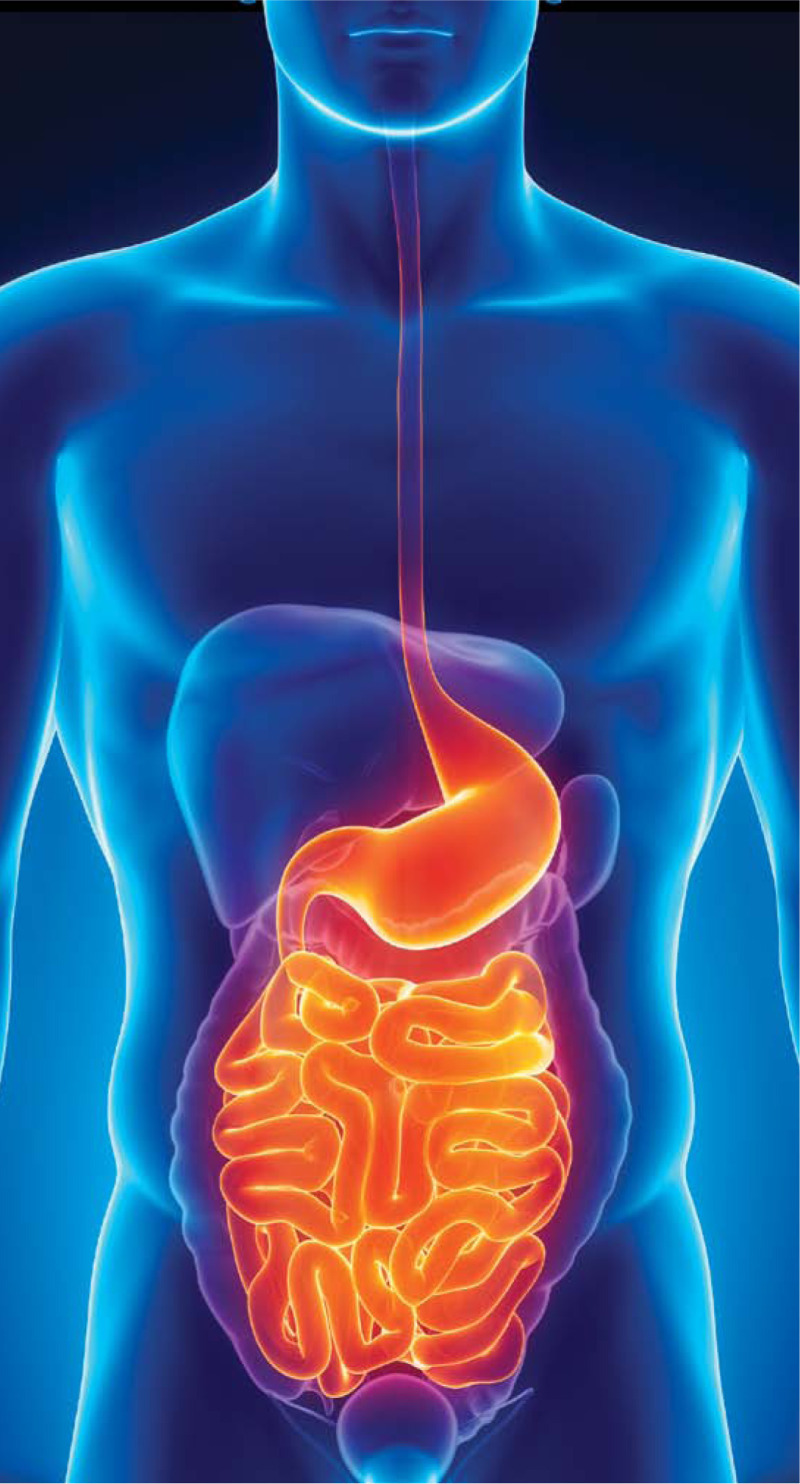
Every bit all organisms live and grow, they must produce vital cellular components and supercede those that wearable out. DNA is the biological textile that holds the information (or blueprint) that living organisms need to build these new components. Specific areas of Dna chosen genes contain the information for each individual component. For the most role, the "bad" or pathogenic East. coli strains have the same collection of genes, or genome, as the E. coli that ordinarily live in our gut. Only pathogenic E. coli also have a few extra genes that contain the information needed to produce components that brand these strains harmful. Most of these pathogenic strains are adapted to life in our gut, only others have armed themselves with genes that can wreak havoc if they grow in other areas of the body like the urinary tract.
An important caveat is that even some of the Eastward. coli strains that are normal inhabitants of our gut can cause illness if they become into the wrong place. Our bodies take become acclimated to and even depend on the Eastward. coli that naturally reside in our gut, but if they abound elsewhere they can cause problems. Remember of a jackhammer – information technology is a useful tool at a construction site but y'all would not want it in a china store! Likewise, some Eastward. coli that are harmless when growing in the gut tin can cause infections if they get into the blood stream, urinary tract infections if they grow in the urethra, or kidney failure if they grow in the kidneys.
How do pathogenic East. coli brand us ill?
Pathogenic E. coli cause illness by disrupting the normal function of the intestines. There are several means that E. coli can exercise this, and different strains of Due east. coli may possess one or more of these traits.
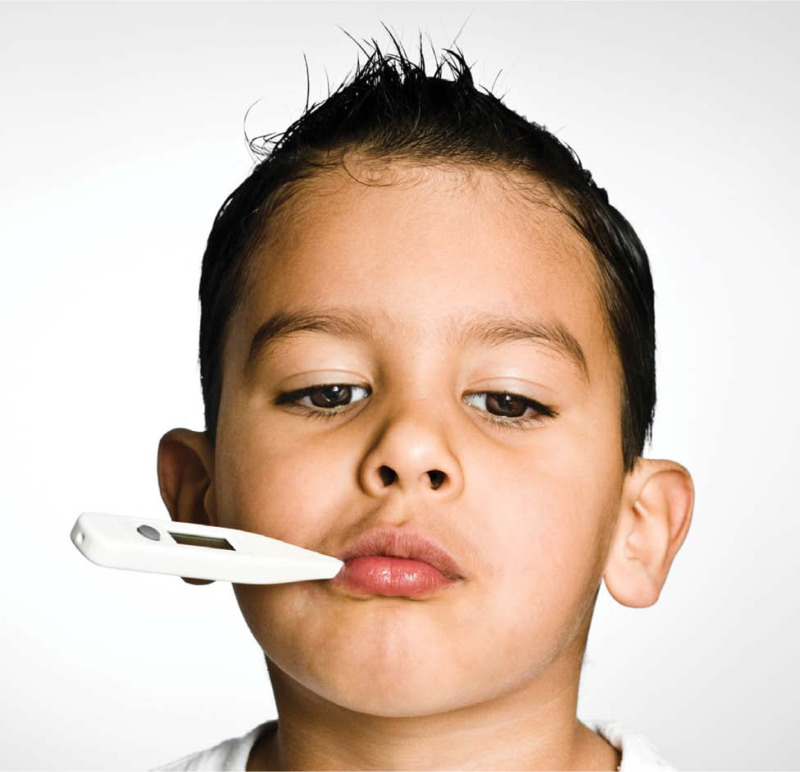
Toxins are biological poisons produced past some East. coli strains. These poisons tin can be injected into intestinal cells, or but secreted into our bodies. Depending on the mode of delivery, toxins tin can have local or far-reaching furnishings on abdominal cells. Invasion into the cells lining the intestines also causes disease by disrupting normal cellular functions. Diarrhea results when the Eastward. coli cause cells in the intestine to blot less h2o, or release h2o into the intestine. In some cases E. coli tin impairment minor vessel cells that line the intestines resulting in encarmine diarrhea.
![]()
There are three features that all pathogenic E. coli demand to crusade intestinal illness: they must be able to get into our gut, they must be able to stay there, and they must have the power to disrupt the normal functions of cells in our intestines.
Pathogenic E. coli does not require any special genes to gain entry to the gut. Harmless E. coli are also capable of passing through the digestive tract. Food and water are the most common routes of entry for both types of Due east. coli.
In one case in the gut, pathogenic E. coli must exist able to attach to intestinal cells in order to make u.s. ill. Some strains produce hair-like appendages called pili or fimbriae that permit them to stick to the cells lining the intestines. Others produce a chemical compound called intimin that allows them to attach to intestinal cells. Still others are actually capable of invading and getting inside abdominal cells! Different strains of pathogenic Due east. coli may apply 1 or more than of these methods to remain in the intestines.
Pathogenic E. coli cause disease by disrupting the normal function of the intestines. Diarrheal symptoms result when E. coli cause cells in the intestine to blot less water, or release water into the intestine. There are several ways that Due east. coli can disrupt intestinal role, and different strains of E. coli may possess ane or more of these traits. Some produce toxins, which are biological poisons that tin either be secreted into our bodies, even inbound the bloodstream, or injected directly into intestinal cells. Depending on the mode of delivery, toxins tin can accept local or far-reaching effects on intestinal cells. In some instances harm to small blood vessel cells that line the intestines can result in encarmine diarrhea. Other E. coli strains invade the cells lining the intestines and cause disease by disrupting normal cellular functions.
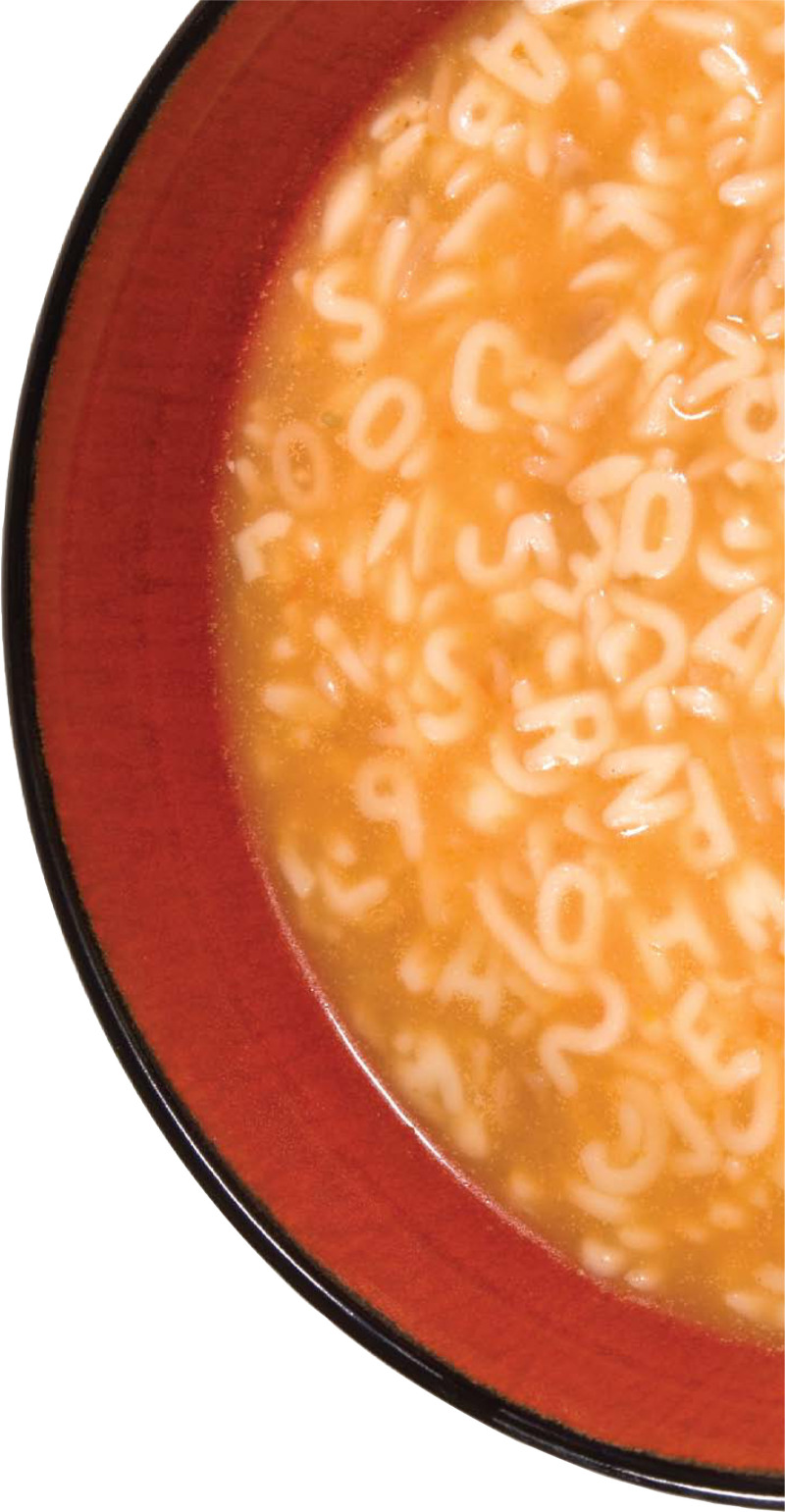
-
▪ THE ALPHABET SOUP OF PATHOGENIC E. COLI STRAINS
What's in a name? For pathogenic Due east. coli strains, a name tin can provide a good deal of information. In improver to strain names, pathogenic East. coli strains can likewise be characterized more broadly by some key traits, including how they adhere to intestinal cells, the toxins they produce, and where they come from. Below is a list of some of the major categories into which pathogenic E. coli strains tin can exist divided and the characteristics that define them:
-
▪ ETEC: (Enterotoxigenic Due east. coli) attaches to the intestines via hair-like appendages called fimbriae, and produces toxins. ETEC causes diarrhea without fever. Information technology is common in infants and is often the crusade of travelers' diarrhea (AKA Montezuma'southward revenge).
-
▪ EIEC: (Enteroinvasive E. coli) invades and destroys cells lining the colon and causes watery, dysentery-similar diarrhea. Fever is another common symptom.
-
▪ EPEC: (Enteropathogenic Eastward. coli) attaches to cells in the intestines via an attachment protein called intimin and causes watery, sometimes bloody diarrhea. It is a common cause of infantile diarrhea in underdeveloped countries.
-
▪ EAEC: (Enteroaggregative E. coli) attaches to the cells lining the intestines in a distinctive clumping mode and produce enteroaggregative toxin. EAEC strains ofttimes crusade prolonged diarrhea in children.
ETEC, EIEC, EPEC, and EAEC are all passed in human carrion.
-
▪ EHEC: (Enterohemorrhagic E. coli) attaches via intimin poly peptide, but produces a poison called Shiga toxin. EHEC strains cause bloody diarrhea and tin sometimes impairment the kidneys and progress to the potentially fatal hemolytic uremic syndrome (HUS). EHEC has caused many large food-borne outbreaks worldwide; O157:H7 is the best known strain. This group is as well known as STEC (Shigatoxin producing Due east. coli) and is the only group that is passed in animal feces.
Why does Eastward. coli make some people sick and not others?
There are many physiological factors involved in whether or not someone is sickened by exposure to pathogenic Due east. coli.
The land of the allowed system is one major factor. Individuals with healthy immune systems will exist much more probable to fight off pathogenic E. coli before symptoms emerge. Other groups may not be so lucky; these include the very young, very old, and people who suffer from compromised immune systems from HIV infection, diabetes, or some cancer and arthritis treatments. Prior exposure to E. coli may play a role in the severity of illness equally well. Individuals who have been exposed to pathogenic East. coli in the by may have retained an immune memory of the pathogen, assuasive their immune arrangement to act faster to deal with a 2d assault. In some Due east. coli illnesses, gender tin can play a role in susceptibility. Anatomical differences betwixt the sexes make it easier for not-pathogenic Eastward. coli to devious into the urinary tract and cause urinary tract infections (UTI's) in women compared to men.
Aside from immunological and anatomical differences, the corporeality of the E. coli or toxins consumed can have an effect on the severity of illness. The saying that "poison is in the dosage" is authentic for illnesses caused by E. coli. Following guidelines for proper nutrient preparation can aid to cutting down or eliminate pathogenic Eastward. coli ingested with food and thereby reduce your chances of getting ill. Good hygiene practices, like washing your hands before cooking or eating and keeping raw foods autonomously from cooked foods, are all useful practices to forestall yous from inadvertently contaminating your nutrient, help limit exposure to E. coli and decrease your odds of becoming ill.
How does E. coli become pathogenic?
E. coli is genetically promiscuous. It tin can commutation genes with other strains of E. coli and even other types of bacteria.
Occasionally this can issue in a not-harmful East. coli strain becoming pathogenic. There are many unlike genes that, when acquired, could alter a harmless E. coli strain into one that makes us ill the most obvious of these beingness genes for toxins. For instance, the E. coli strain responsible for the outbreaks in Federal republic of germany in 2011 was a less harmful strain that acquired genes for product of Shiga toxin. This is something of an abnormality. Generally the conversion of E. coli to pathogenicity is not a one-step process but rather involves the acquisition of several genes in a stepwise way. While toxin genes are the virtually obvious culprits for the conversion to pathogenicity, other genes can have similar furnishings. Acquiring genes that allow an East. coli strain to better adhere to or invade abdominal cells can also be important steps to developing the power to cause illness. Other genes, similar those that code for antibiotic resistance, can make strains more than dangerous by making them more difficult to care for.
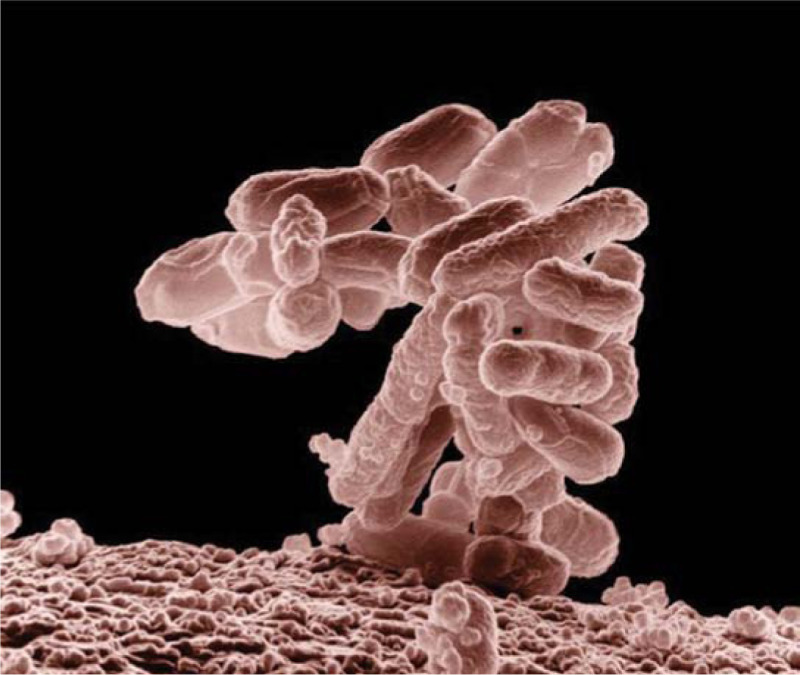
How do E. coli become genes from other bacteria?
The well-nigh common fashion that E. coli and other bacteria exchange genes is by mode of infection with special viruses that target leaner, chosen bacteriophages, or phages for short. These special viruses reproduce themselves past injecting their genes into E. coli and other leaner where the viral genes begin a program that hijacks the bacterium'southward internal machinery, effectively taking over the bacterium. Once this happens the hijacked machinery begins to produce more viruses by replicating the virus genes and outer cover, or capsid, of the virus. One time new viruses have been assembled from these parts, they escape and infect other bacteria.
Occasionally the copying and packaging of the viral genes is sloppy, and some of the bacterium'southward genes are copied besides. These genes may so be packaged into the viral capsid, and inserted into the adjacent bacterium to be infected. Although the run a risk of this happening is depression, phages are and so numerous that these mispackages correspond the most common form of gene substitution in bacteria. Some viruses deport the genes for toxins in their genome, making this a peculiarly potent method of passing toxin genes from ane bacterium to another.
Genes can besides be transferred from 1 bacterium to another by conjugation, the bacterial equivalent of sex. To begin the process, one bacterium extends a span to another bacterium, establishing a connection between the two, like to an enclosed walkway betwixt buildings. Once this link is established, genes on Dna structures chosen plasmids tin be transferred from ane bacterium to the other. Plasmids are small circular collections of genes that can re-create themselves independently of the bacterial genome. Genes that give bacteria resistance to antibiotics are oft plant on plasmids, so conjugation is a common fashion that antibody resistance is spread. E. coli aren't picky and tin cohabit with other strains of Due east. coli as well as with other unrelated leaner, spreading genes among many different bacteria.
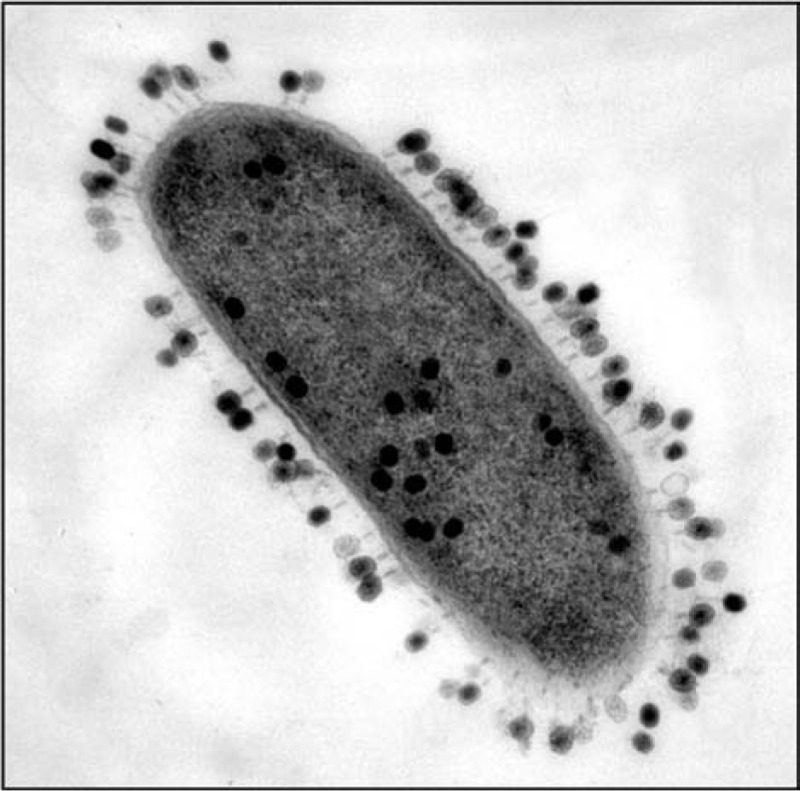
The last method by which E. coli tin can acquire new genes is through the acquisition of naked DNA. When bacteria die they often pop, a process called lysis, and release their contents, including their Deoxyribonucleic acid, into the environment. There is a low, just existent chance that this "naked Dna" volition be picked up by Eastward. coli and become incorporated into its set up of genes. This method is less common than the other two processes, but still represents a method of factor transfer.
How does our food become contaminated with East. coli?
It all starts with poop.
This may seem flippant or disgusting, but information technology is quite accurate. Because E. coli lives in the gut, transmission of East. coli from one organism to some other is predominantly from feces to oral cavity. The source of E. coli in almost all food and water contamination events can be traced back to exposure to fecal matter at some point in the nutrient chain; whether it is on the farm, at the processing plant, in transportation, during retail, at the eating house, or even during preparation in our homes.
One direct road of fecal contagion is from the use of manure as a fertilizer in agronomics. Nigh manure is devoid of harmful E. coli, but a small-scale per centum of cattle bear pathogenic E. coli in their gut. These harmful E. coli are so shed in the cattle'southward manure and, if applied to crops without outset being composted, tin can be a source of contamination. If contaminated produce is not properly cleaned or processed, it may comprise East. coli when information technology reaches the supermarket. Wildlife may also contaminate nutrient. Deer, birds, and pests native to agricultural areas can deposit feces that may contain pathogenic Eastward. coli on plants. Manure can cause contagion problems in nutrient fifty-fifty when non used as fertilizer. Raw milk can be contaminated during the milking procedure. When cattle are slaughtered, E. coli from their feces can occasionally make its way onto beef. When this happens, it is simply the surface of the meat that becomes contaminated. For many cuts of beefiness, like steak, cooking is likely to impale the bacteria. In ground meat however, the grinding procedure volition mix and distribute the contaminated meat throughout the production, which is why it is and then important to cook basis beef thoroughly. Improper food handling is another potential source of fecal contamination. Poor personal hygiene, like failure to wash hands properly afterwards using the toilet, tin can laissez passer harmful E. coli from infected food handlers to food products.

Contamination of food tin also come through water. Spraying contaminated water on plants to gargle, wash, or chill them can contaminate foods. If produce (especially leafy dark-green vegetables) are grown in h2o that has been contaminated by manure, the E. coli tin adhere to their surfaces and become extremely difficult to wash off. In some cases, the E. coli can even find its style inside the vegetable'southward cells where washing will have no outcome. H2o laced with E. coli is non only a problem on the subcontract. Water used in food processing, or even to wash food at the supermarket, if harboring harmful E. coli, tin also contaminate nutrient.
It is hard to list all the ways that nutrient could be contaminated with E. coli – there are and then many possibilities. This is why ensuring food prophylactic, by protecting our nutrient from contamination by Due east. coli and other pathogens, is such a challenging and complex task!
Nutrient is non the only manner we can ingest E. coli. Pathogenic E. coli contamination is a problem in recreational h2o besides. If not properly cleaned and chlorinated, E. coli can survive in swimming pools. Ponds and rivers are other recreational water sources that can potentially exist contaminated by E. coli. Certain settings where humans are in close contact with animals or their manure, such as farms, petting zoos, or using manure in gardening are a few examples of how harmful E. coli strains can gain entry into our bodies.
What steps are being taken to protect our food from contamination past pathogenic Due east. coli? And what tin be done?
There are two ways to protect food from contamination with pathogenic E. coli: foreclose bacteria from getting into nutrient in the commencement place or care for food products in such a way as to kill or inactivate whatever leaner that have slipped by all precautions.
In the modern world, food follows a complicated and sometimes very long path from the farm to the consumer'southward tabular array. As described in the previous section, contamination tin can occur anywhere along that path. In that location are regulations and guidelines in place to reduce the take a chance of contagion, merely no single regulatory agency is responsible for the entire food manufacturing process from raw to finished production.
The U.S. Department of Agronomics (USDA) is responsible for meat, poultry, and eggs, and regularly inspects these manufacturing plants. The U.S. Food and Drug Administration (FDA) is responsible for regulating the condom of all other food including seafood and produce and routinely tests nutrient to ensure the absence of harmful East. coli and other leaner. The FDA has also developed voluntary guidelines for farmers called "Good Agronomical Practices" for ensuring subcontract worker hygiene, a clean water supply, and appropriate handling of fauna waste during product. Food processing plants are required to implement a Hazards Analysis and Disquisitional Control Points (HACCP – pronounced "hassip") plan. Part of a HACCP plan is to examine the unabridged manufacturing or processing system to identify the most vulnerable points where contamination may occur and develop appropriate risk reduction, monitoring and intervention strategies. Local retail establishments are subject to local public health regulations, which are frequently based on Federal guidelines. Condom treatment and food grooming practices on the part of the consumer are also essential for reducing food borne disease – both the FDA and the USDA provide extensive consumer information on their websites. Nosotros cannot rely solely on testing, because it is impossible to test all the food we import and eat, plus nutrient is so diverse and manufacturing is and so complex that risk cannot be completely eliminated.
Some risks are considered so substantial that federal and country laws prohibit certain practices. For example, in most states unpasteurized (raw) milk is prohibited or can only be purchased directly from a farmer. Milk that enters into the commercial pipeline must be pasteurized, a procedure by which milk is sufficiently heated to kill pathogens, like E. coli that may be present. Other processed foods and beverages (similar juices) can also be pasteurized to reduce wellness risk. Irradiation is another process that could decrease the incidence of East. coli infections. Irradiation involves passing high energy beams through food. The beams can exist produced in several ways, but the important point is that they laissez passer completely through the food, damaging the DNA of living organisms and then that they can no longer reproduce. Irradiation leaves no radiation or harmful chemicals behind. Depending on the beam dosage, insects, molds, and bacteria can be killed by this treatment, with minimal effects on the appearance and taste of food. As the CDC website on irradiation explains, the process is not a substitute for safe practices from the farm to the table any more than pasteurization can supercede responsible milk production and handling (http://www.cdc.gov/ncidod/dbmd/diseaseinfo/foodirradiation.htm). However, irradiation has the potential to dramatically reduce the number of cases of foodborne affliction caused by Due east. coli.
What else could be washed to reduce the incidence of disease due to E. coli? One intriguing idea is the development of vaccines confronting the toxin produced by affliction-causing E. coli. This would protect people from the worst furnishings of virulent Eastward. coli infections, while not harming the benign E. coli that live in the human gut. In that location are also vaccines that could be given to the animals to reduce the number of harmful E. coli they carry.
At every stride of the path from the farm to the tabular array, at that place are many ways to reduce the likelihood of E. coli from contaminating the nutrient supply, and treating food so that contagion is eliminated before the food reaches the consumer. Just the final line of defence force-treatment and cooking food properly, will remain the responsibleness of the cook and consumer.
What types of foods are most usually associated with E. coli, and why do at that place seem to be more cases of contamination recently?
Eastward. coli live in the gut. If an animal or person is infected with a pathogenic strain of E. coli, the bacteria will be shed in manure or feces. Therefore, foods that are probable to come into contact with animal or human fecal waste, therefore, are the well-nigh likely to be contaminated, specially if they are not cooked; these include inadequately cooked beefiness, sprouts, raw cookie dough, raw nuts, raw milk cheeses, and raw fruits and vegetables.
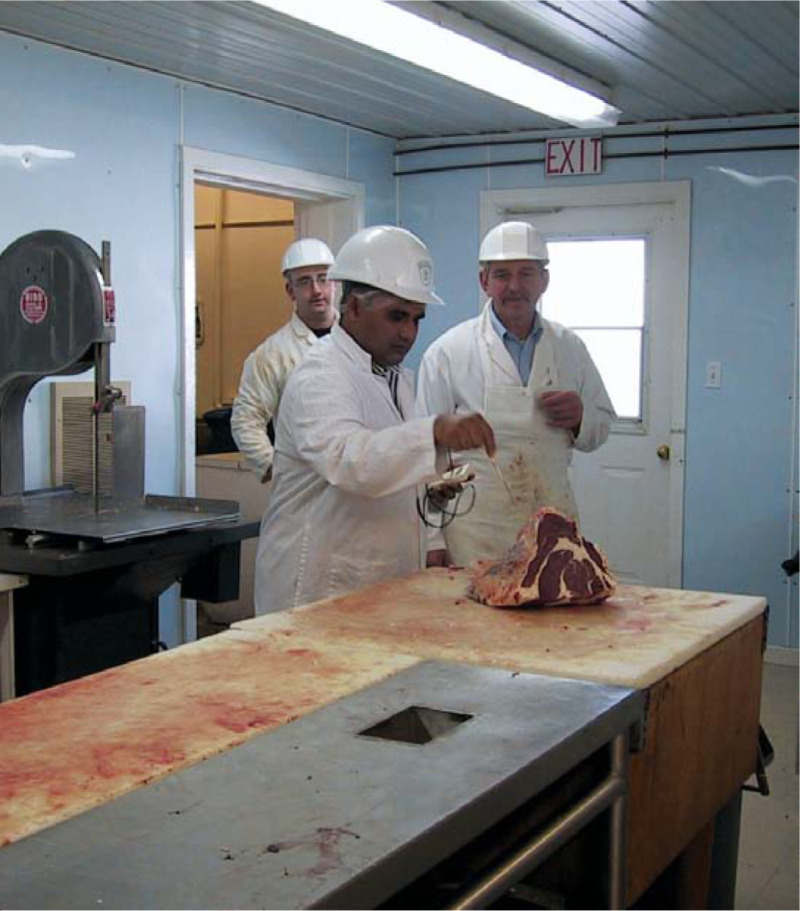
Short of avoiding these foods entirely, information technology is incommunicable to reduce the risk of foodborne Due east. coli infection to nil, although safe food handling practices can reduce the risk substantially.
Epidemics acquired by pathogenic E. coli are extremely newsworthy, which gives the impression that they are becoming more frequent. But surveillance by the CDC and country public health departments actually shows a marked decrease in the number of E. coli O157 cases in the last fifteen years (http://www.cdc.gov/mmwr/pdf/wk/mm60e0607.pdf). Better surveillance and detection of outbreaks ways that more outbreaks are beingness identified, but the vast bulk affect a small number of people. Rapid detection and investigation of outbreaks with amend public health surveillance, more microbial testing, and increased regulatory authorization to retrieve products when Eastward. coli O157 is detected have been identified as factors that have contributed to the subtract in the number of cases. Still, food borne infections continue to occur and some modern practices have been suggested as potential contributors to an increment in the risk of E. coli infections. Food products, including meat and fresh produce, mass produced past large manufacturers, are widely distributed and are increasingly likely to travel long distances from the farm – some are even from other countries where regulations, farm practices, and processing standards may be less stringent. At the aforementioned fourth dimension, an increase in the consumption of ready-to-consume raw, organic, and local produce complicates efforts to guarantee the safety of our food. In addition to these fears of potential increased risk of exposure to E. coli, in that location are concerns that increased travel and trade, increased utilise of antibiotics, and intensive animal farming practices could contribute to the emergence of new strains of E. coli that might exist more virulent or resistant to ane or more antibiotics.
Most experts agree that food safety is better than always, just we must remain vigilant to protect our food. Due east. coli has not been domesticated. At that place are still "wild" strains that have the capacity to cause illness and death and we should expect new strains to emerge that volition continue to threaten our health and the rubber of our food. Despite this, it is important to remember that these are not new challenges - Eastward. coli has accompanied humans and larger animals for millennia. It has become an important part of our gut and, much more recently, a remarkable tool for scientific study. We cannot predict how E. coli will impact mankind in the future, but we know that it will always be with us.
ruckmannoureciand.blogspot.com
Source: https://www.ncbi.nlm.nih.gov/books/n/goodbaddeadly2011/
0 Response to "what does e coli do to the human body"
Post a Comment